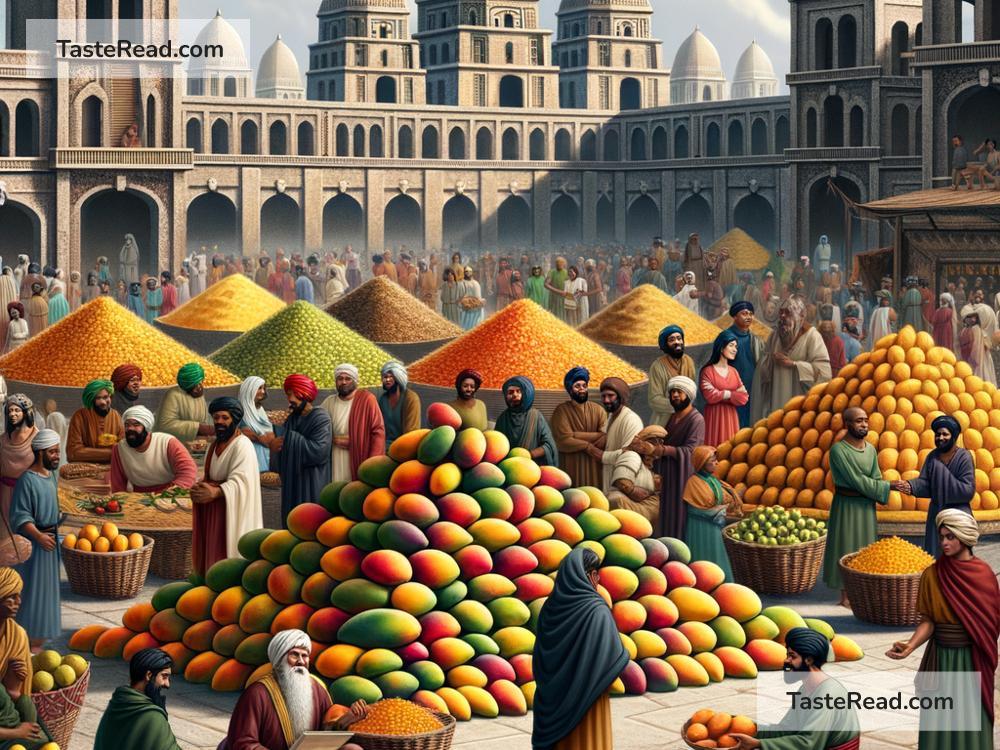The Sweet Obsession: Ancient Cultures and Their Love for Mangoes
Throughout history, many ancient cultures have shown a deep love for mangoes. Known as the “king of fruits,” mangoes have not only delighted taste buds but have also held cultural, spiritual, and medicinal significance. Today, mangoes are enjoyed worldwide, but their story stretches back thousands of years. Let’s explore how ancient civilizations were obsessed with this golden fruit.
Mangoes in South Asia: A Sacred Beginning
The origins of mangoes trace back to South Asia, particularly India and Myanmar, over 4,000 years ago. In India, mangoes were not just a delicious fruit—they were considered sacred. The mango tree was often linked to spirituality, prosperity, and love. Ancient Indian texts, such as the Vedas, mention mangoes as symbols of fertility and good fortune. Kings and emperors loved mangoes so much that they planted vast orchards to grow these prized fruits.
Mangoes were also associated with divine figures. For example, in Hindu mythology, the mango is thought to be the favorite fruit of Lord Ganesha, the elephant-headed god of wisdom and prosperity. It was believed that offering mangoes to deities could bring blessings and happiness. Even the leaves of the mango tree were considered auspicious; they were used to decorate homes during festivals and weddings to invite positive energy.
Mangoes in Ancient India: A Gift Fit for Kings
Ancient Indian rulers were passionate about mangoes. The famous Mughal emperor Akbar was such a fan of mangoes that he planted over 100,000 mango trees in a massive orchard called Lakhi Bagh. The Mughals also perfected the art of growing specific varieties of mangoes, and their royal chefs created amazing dishes, from mango chutney to mango desserts.
As mangoes spread across the region, they became a popular diplomatic gift. Rulers often sent baskets of the best mangoes to foreign dignitaries to showcase their wealth and hospitality. This simple yet luxurious fruit symbolized friendship and goodwill between kingdoms.
Mangoes in Ancient Southeast Asia and China: A Delicious Import
Through ancient trade routes like the Silk Road, mangoes traveled to new lands. Southeast Asia, including modern-day Thailand, Cambodia, and Vietnam, embraced the fruit as a staple in their cuisine. Whether eaten ripe or unripe, mangoes quickly became a beloved ingredient in traditional dishes. Green mango salads and refreshing mango desserts were popular choices.
Mangoes eventually reached ancient China, where they were appreciated for their sweet taste and health benefits. Chinese herbalists believed mangoes could cool the body during hot summers and strengthen the stomach. While mangoes remained a rare luxury in China during ancient times, they were valued as a prized fruit.
Mangoes in Ancient Persia and the Middle East: A Trade Treasure
Mangoes traveled westward through trade routes to ancient Persia and the Middle East. Persian records mention mangoes as exotic fruits brought from India, and they were often served at royal banquets. Traders valued mangoes highly, swapping them for spices, silk, and other goods. Over time, mango cultivation spread across the region, flourishing in the warm climates of countries like Iran.
Mangoes were more than just food; their juicy pulp inspired poetry and art. Ancient Persian poets wrote verses likening mangoes to the sweetness of love and the beauty of summer.
Mangoes in Ancient Africa: A Symbol of Prosperity
Mangoes reached Africa thanks to early traders traveling by sea. In ancient Egypt, mangoes were seen as a luxurious fruit enjoyed by royalty and the elite. As mango cultivation spread to tropical regions of Africa, mangoes became a symbol of prosperity in farming communities. The fruit was often associated with abundance, and its arrival marked the beginning of harvest celebrations.
African cultures found creative ways to use mangoes, not just as food but also for their medicinal properties. Mangoes were believed to boost immunity and provide energy, which made them invaluable in regions with challenging climates.
Mangoes in Ancient Europe: Making a Late Entrance
Compared to Asia and Africa, Europe was late to the mango party. Mangoes began appearing in Europe during the Age of Exploration, when Portuguese traders brought them from India in the 15th and 16th centuries. Europeans were fascinated by their sweet taste and exotic nature. Artists painted mangoes in still-life works, showcasing them as symbols of wealth and discovery.
Although mangoes were not widely grown in Europe, their imports were highly prized. Mangoes became an exotic treat for aristocrats, sparking curiosity about the tropical lands they came from.
The Legacy of Mangoes
Ancient cultures didn’t just consume mangoes; they celebrated them. From religious rituals and poetry to trade and diplomacy, mangoes played an important role in shaping traditions and connections between civilizations. Even today, the obsession with mangoes continues, with countries like India, Thailand, and Mexico leading global mango production.
So the next time you enjoy a juicy mango slice or sip on a mango smoothie, remember that this fruit carries history, culture, and passion from civilizations long gone. Mangoes are far more than just a snack—they are a timeless treasure cherished by people across the world.


